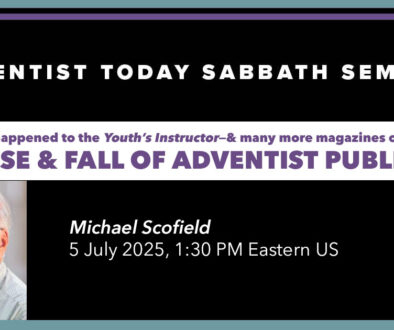Sharing Scripture for August 18 – 24
[symple_heading style=”” title=”The Least of These” type=”h1″ font_size=”40″ text_align=”center” margin_top=”0″ margin_bottom=”30″ color=”undefined” icon_left=”” icon_right=””]
This is a tool for you to use if you lead a Sabbath School (SS) class or small group. It is keyed to the Bible texts used in the current week’s Adult SS Lesson and includes a brief story from current news you can use to introduce the discussion and then a series of discussion questions in a relational pattern designed to build fellowship and spiritual reflection.
For use: Aug 19 – 24
Texts: Matthew 5:2-16, 38-48; Romans 12:20, 21; Luke 16:19-31; 12:13-21; Matthew 25:31-46
Gary Parmentier and his family are on the hunt to find the mystery man who helped save his life earlier this month.
Parmentier broke his neck while body surfing along a Massachusetts beach. Paralyzed, he called for help whenever a wave pushed him to the surface. A middle-aged man wearing dark swim trunks came to his rescue. Once back on shore, the Good Samaritan left Parmentier with lifeguards and disappeared. Over 11,000 people have shared a Facebook post pleading for information about the man. [1]
The Samaritan that Jesus referred to not only helped someone in need, but he helped someone who probably despised him. We often think of “the least of these” as the poor and disadvantaged who are glad for our help—the hungry, naked, and imprisoned. In many cases today, however, those we least esteem are those who promote a political or religious agenda that we disagree with, or wear the sports jersey of our hated rival! Could it be that today we need to rethink who are really the least in our own eyes?
Jesus taught us to be less concerned about others’ belief systems and more concerned about the welfare of our fellow humans. He told the story of the Good Samaritan in answer to the lawyer’s question “Who is my neighbor?” As a good legalist, the lawyer expected that Jesus would commend him for caring for his friends and immediate neighbors. Jesus turned that notion on its head when he revealed the hero of the story to be a despised foreigner, and our neighbors to be people we don’t necessarily like.
Jesus also included the poor and disadvantaged in his description of “the least of these.” The disciples wanted to know the prophetic signs of the coming destruction of Jerusalem and his return. Jesus responded with some generic descriptions of current events that can apply to any time in earth’s history—when have there not been earthquakes, wars, and famines? His main point was: Don’t wait to get worked up over current events; be ready at all times. Then Jesus explained how we can be ready: Focus our time and energy on caring for the least of Jesus’ brothers and sisters. When we care for them—even if they are the fans of our cross-state rivals—we are caring for him.
[symple_divider style=”solid” margin_top=”20″ margin_bottom=”10″]
Connecting: Have you ever been one of the least of these—unemployed, homeless, hungry, or imprisoned? Those who choose, briefly share your circumstances. How did you overcome that situation? Did someone come to your aid? Are you surprised to hear some of these stories from your group members?
Sharing: Which do you see as the most important commodity that those who are well-situated can share with those in need?
- Money
- Proper nutrition
- Dignity
- Educational opportunities
- Shelter
- Other:
Applying: What is your congregation doing to assist “the least of these” in your community? How can you be more effective in these ministries? Brainstorm ways that your group can help make even a small difference.
Valuing: Take a personal inventory of those you least esteem. Why do you think you look down on these people? Pray that God will help you always see beyond what we typically perceive on the surface and regard others through the eyes of heaven.
~Chuck Burkeen




